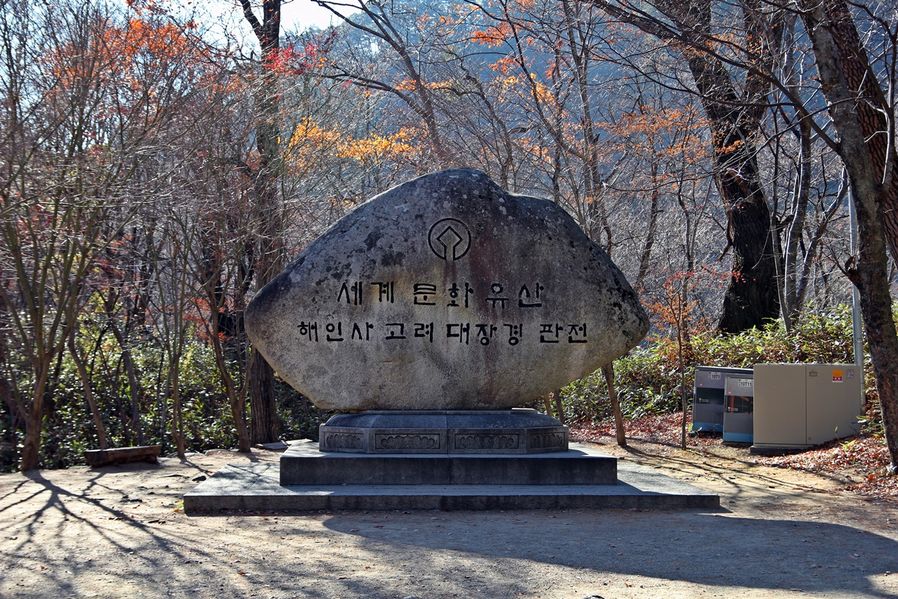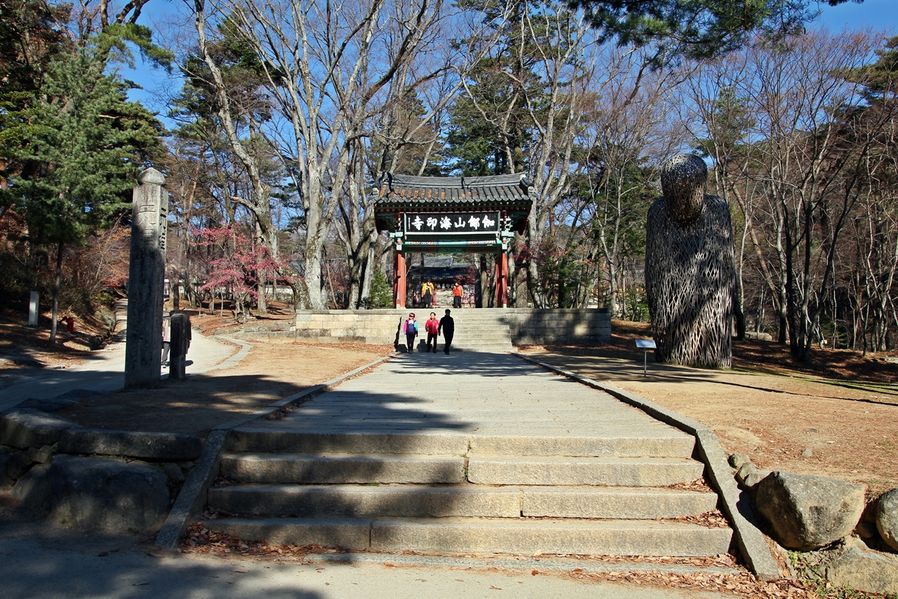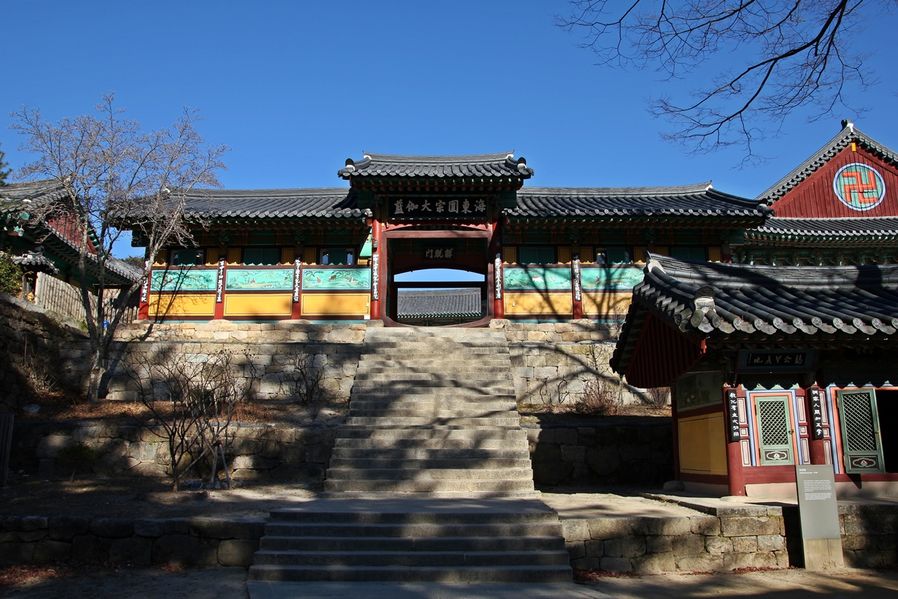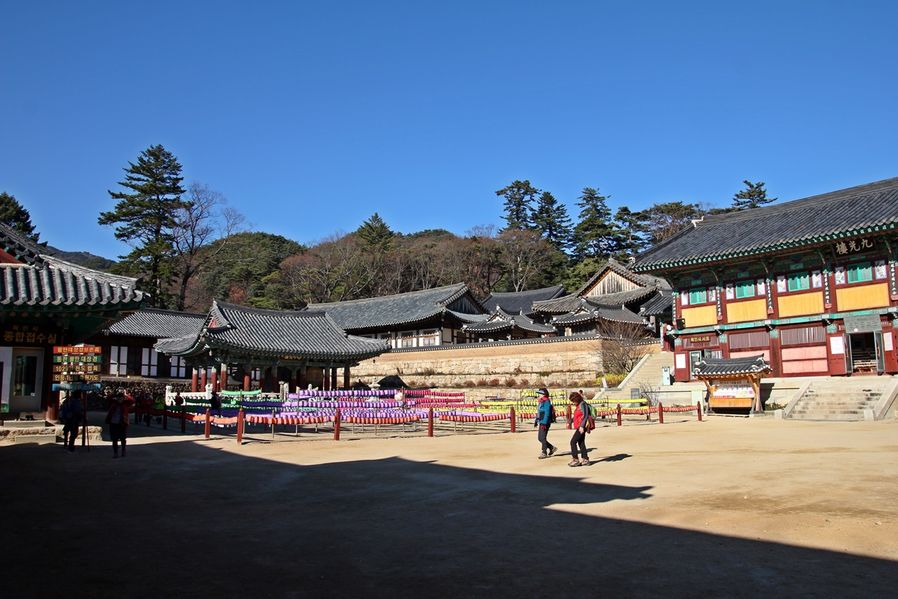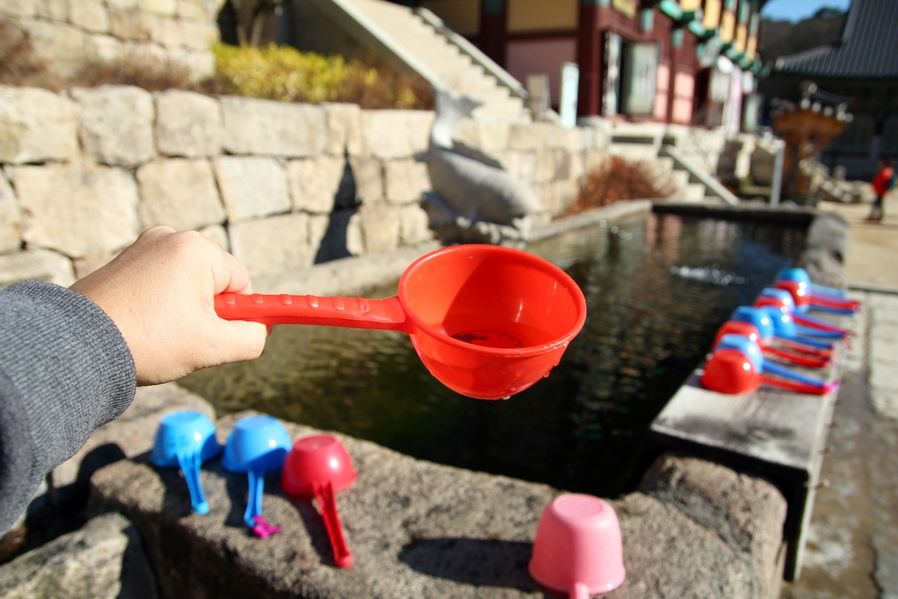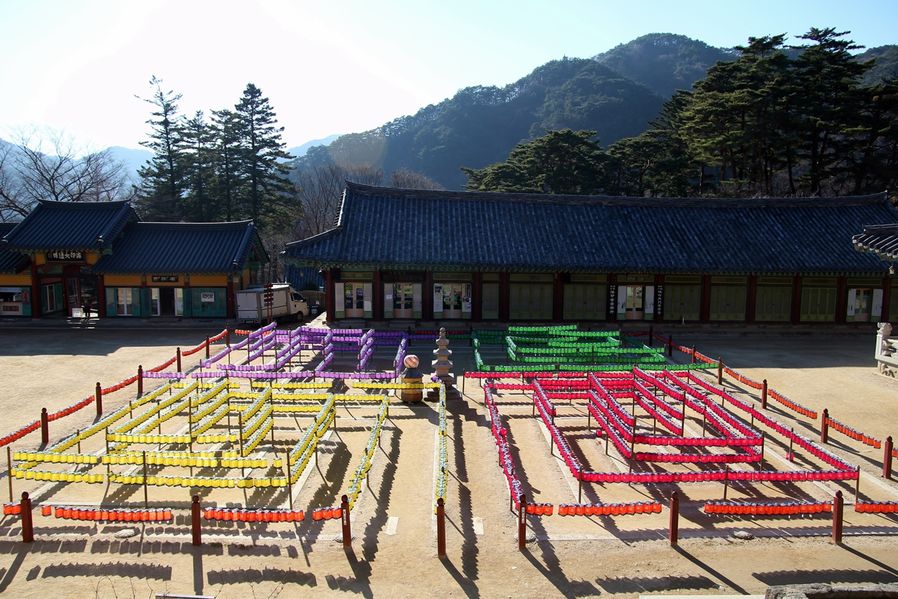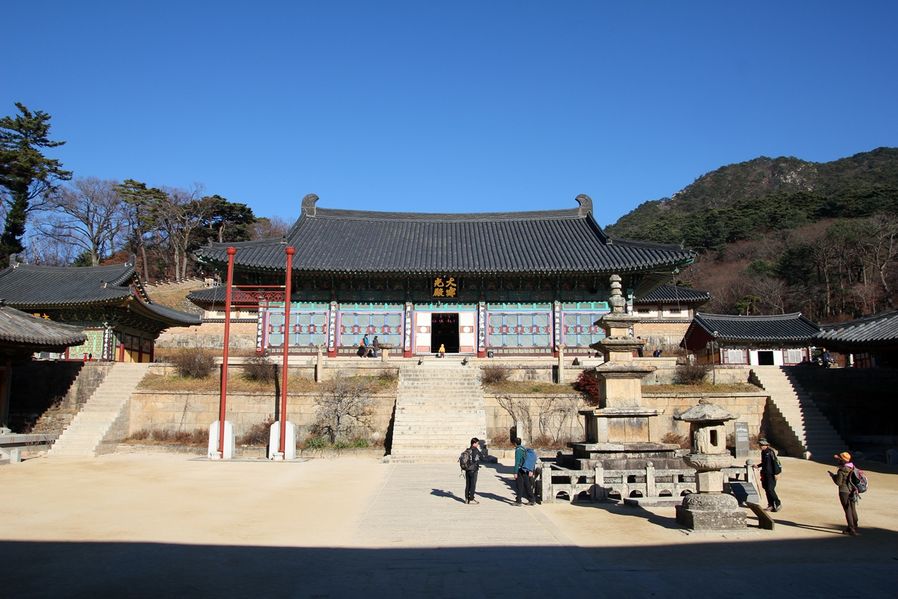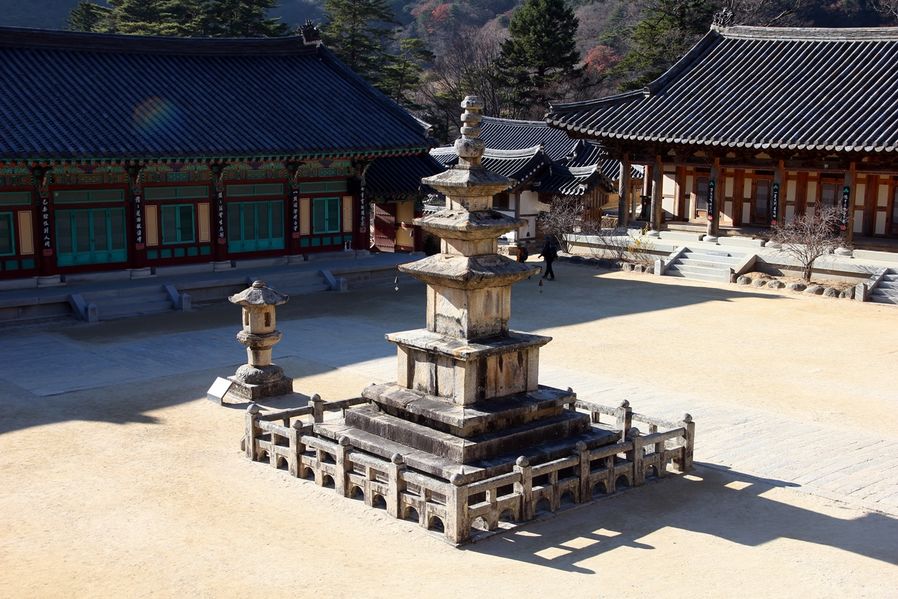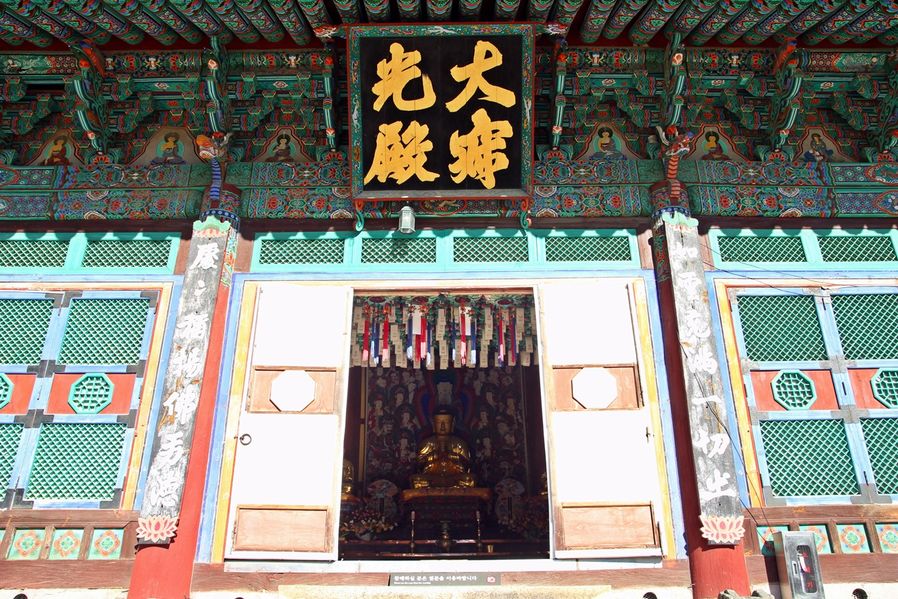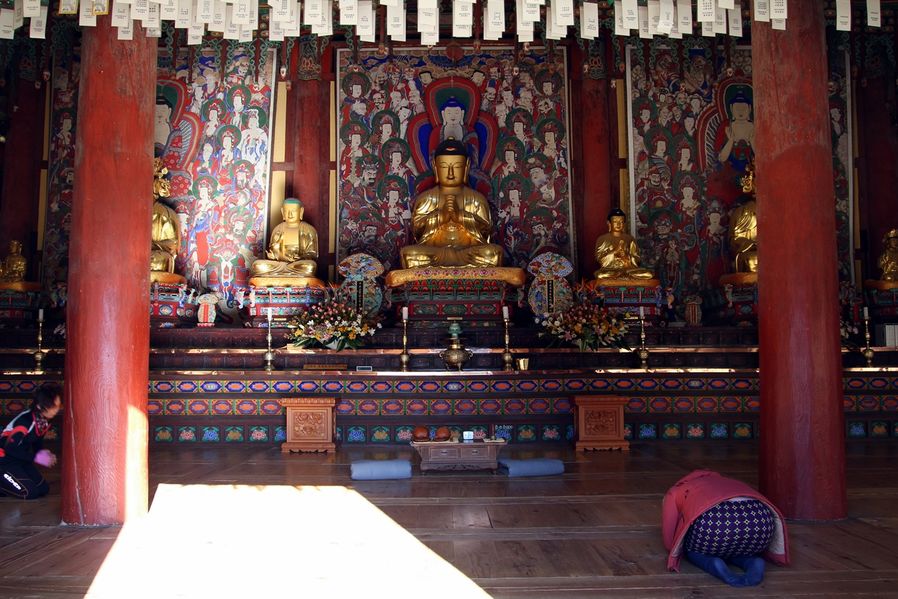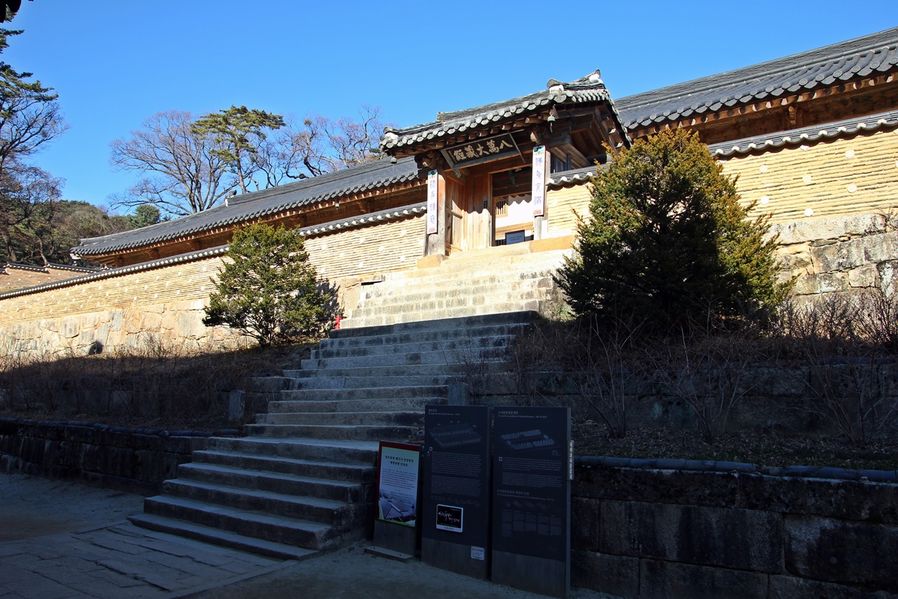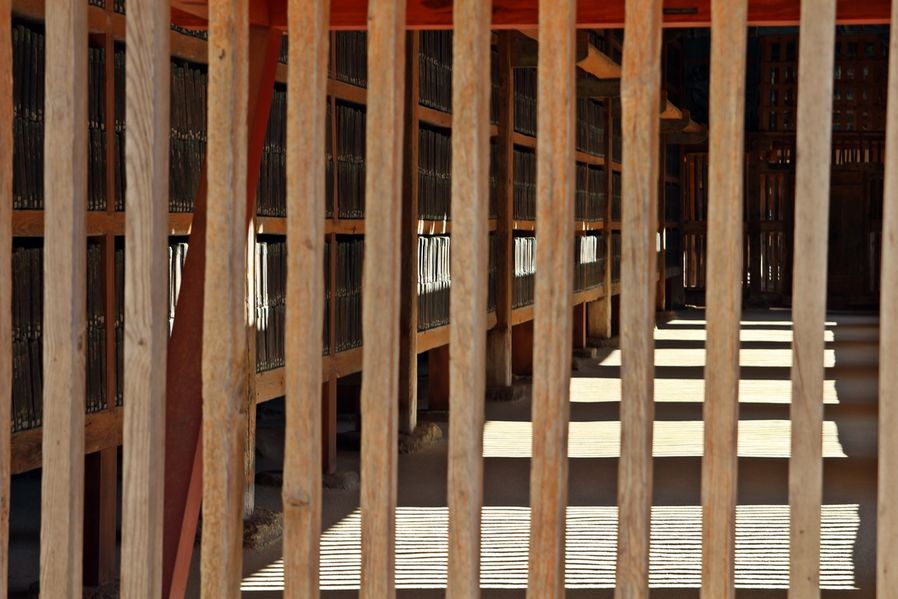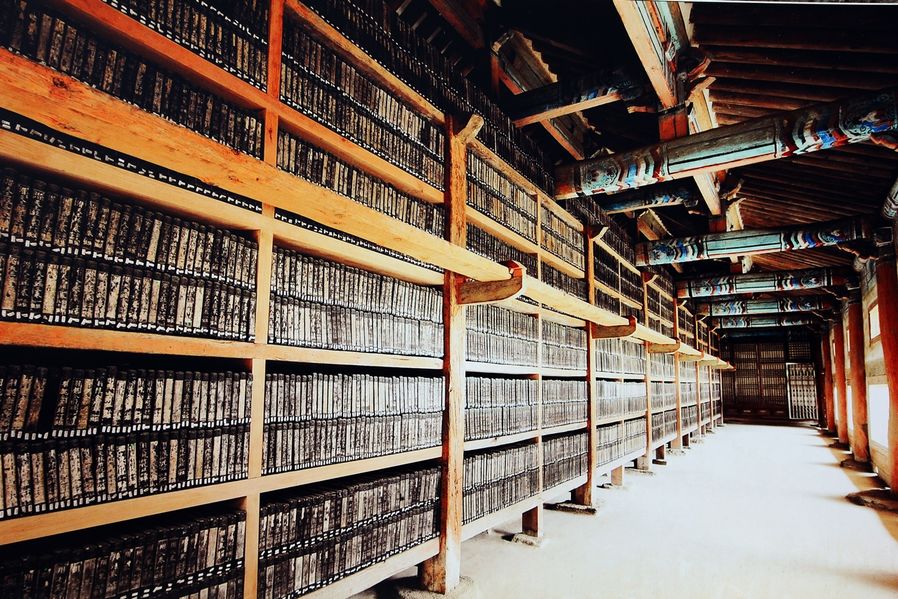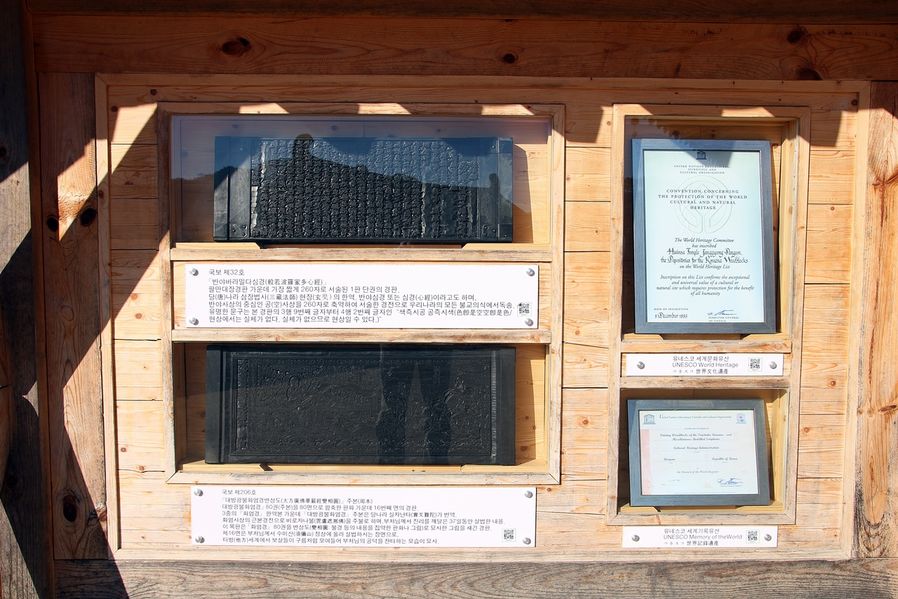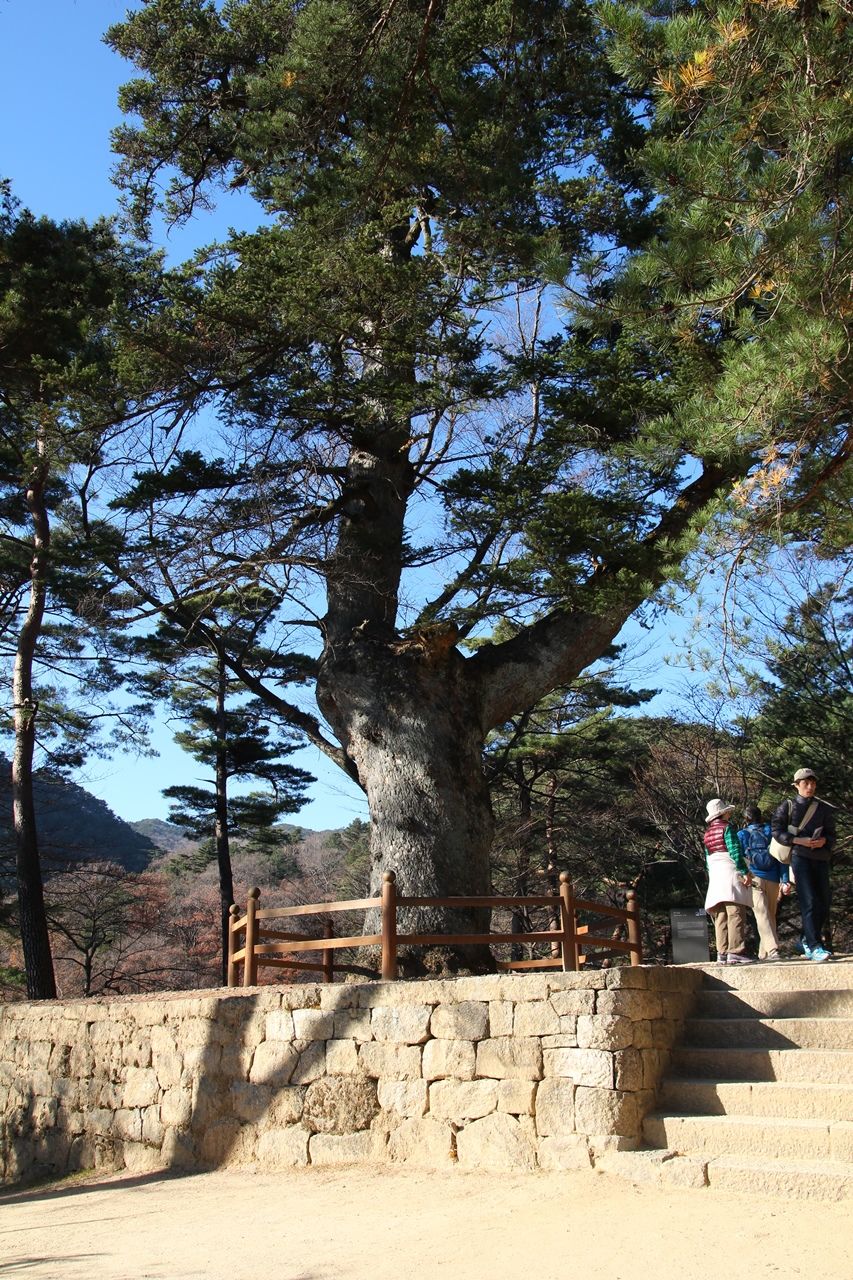-
Start
-
Hwangmae Mountain
-
Theme Park
-
Gagopa Sikdang
-
Jeongyang Wetland
-
Punggyong
-
Sonkalguksu
-
Sorigil
-
Seongbo Museum
-
Haeinsa Temple
-
Gobau Sikdang
-
Finish
Hapcheon-gun is the biggest and widest city in Gyeongsangnam-do. It’s 1.6 times bigger than Seoul and if I have to pick one fine trail in Hapcheon, I say it’s Haeinsa Sorigil. At the end of Sorigil, there’s Haeinsa where it dresses different clothes in each season and the history is alive. Haeinsa would remind most people of Tripitaka Koreana. But even for those people, Haeinsa shows more than that. From the Iljumun Gate(One Pillar Gate) through Phoenix Design to Gate of Salvation, you’ll see Daejeok-gwangjeon Hall(main temple) of 1,200 years old history.
Most people misunderstand that Tripitaka Koreana is UNESCO World Heritage. What’s designated as UNESCO World Heritage is not Tripitaka Koreana but the building that it is kept called JanggyeongPanjeon(藏經板殿; storage building). Tripitaka Koreana is designated as UNESCO’s Memory of the World Register. You can meet JanggyeongPanjeon consisting of Sudarajeon, Beopbojeon and Saganjeon of East/West after you pass three gates in Haeinsa and Daejeokgwangjeon Hall.
There are three treasures(三寶) in Buddhism. They are Buddh(佛)Text(法)Monk(僧), which represent the Buddha, his words and monks who transmit Buddha’s words. Among so many temples in Korea, there are three temples that represent these treasures, Haeinsa in Hapcheon, Songgwangsa in Suncheon and Tongdosa in Yangsan. In particular, Haeinsa was built 1,200 years ago, third year of King Aejang(in 802), the 40th King in Silla. Now shall we pass the Iljumun Gate?
As I entered Iljumun Gate, I saw Phoenix Design far away with ‘Haeinchongrim’ written on it and the trees were lining up on the sides of the trail that must be hundreds of years. Among them, there is a dead tree that was planted during the King Aejang in Silla when the temple was built.
As I entered Phoenix Design, I see Gate of Salvation. Well I have to pass many stages to finally see Daejeokgwangjeon Hall. Gate of Salvation refers to a stage where you are free from anguish(煩惱) and reach nirvana(涅槃). Our ancestors used to name every architecture and I wish we could inherit this spirit promoting people with proper phrases. I kinda feel sad that the buildings these days do not own a name at all.
Right past Gate of Salvation, there’s a big yard with Bell Pavillion. And there’s a swinding path in the yard with small lamps but I don’t know what that is. I gotta check up there later.
Before that, I gotta drink cold water flowing from the mountain. After 3km of walk, this cup of water was appreciated enough. It’s so fresh coming from nature.
I went up the stairs a bit and noticed the path in the yard was circling the tower in the center of the yard. Would they answer my prayers if I circle the tower?
I came up and finally saw Daejeokgwangjeon Hall(main temple). Haeinsa was built based on the Avatamska Sutra so it has Vairocana, main Buddha of the Avatamska Sutra. Current building was rebuilt in 1818 by the King Sunjo in the Joseon Dynasty era at the exact location where the original one was built in 802. It’s located in a quiet place under Bibong Mountain.
There is a three-storied stone pagoda and stone lantern in the front yard of Daejeokgwangjeon. The tower is where people pray and enshrine Buddha’s sacred relics, scriptures or Buddha’s statue, located in the center of temple most of the time. It looks like a typical stone pagoda built in the period of united Silla in the 9th century. People often worship the tower by circling around it and the rumor has it that you will get your prayers answered if you try it. Stone lantern is just a light that represents bright prospect(光明) of Buddha.
As I approached Daejeokgwangjeon, I felt like the Sakyamuni in the center was telling me “oh you came”.
Everybody must have their own stories when they pray keeling down in front of the Buddha. I don’t have any religion but I paid my respect and told my stories as well. You don’t have to have a religion to pray so why don’t you show your respect and pray in a church or temple if you go? Who knows? One of them would be answered. ^^*
Behind Daejeokgwangjeon, we could finally see JanggyeongPanjeon that keeps the Tripitaka Koreana, UNESCO’s World Heritage and Memory of the World. Unfortunately we are not allowed to get inside JanggyeongPanjeon. For the last few years, our heritage was burnt to ashes due to fire including Sungnyemun Gate, Naksansa Temple, Hyangiram Hermitage, Beomeosa Temple and Hwaeomsa Temple. So it’s been closed until December 31, 2016. It’s so sad.
The JanggyeongPanjeon(storage buildings) located in the innermost place in the temple surrounded by red tapes had awe-inspiring atmosphere. Unfortunately we couldn’t go inside but I could see from afar between the bars in the window. This building was built after elaborate consideration about natural phenomena using reservation techniques that current architectural techniques cannot follow. The floor was made of salts, charcoals, lime powders and sands that maintain average humidity to preserve woodblocks and maximize natural draft with windows in different sizes. How amazing their architectural techniques were?
I could see the magnificent look of them through a chink in the door. The Tripitaka Koreana has various and great records indeed for it was made to protect this country against the invasions from the Kitan and Mongolia, the powerful countries at the time, with Buddha’s power and Buddhist scriptures. Each woodblock is 69cm x 24cm x 2.6-3.9cm(width x height x depth) big that weighs 3-4kg that could have 322 letters on one side (22-23 lines and 14 lines on one side), which would have 644 letters on both sides. So the number of letters engraved on 81,258 woodblocks would be over 52,330 thousand letters. It took 16 years to make them and the number of letters is almost same as the letters in the Annals of the Joseon Dynasty that’s been written for 470 years. So if one reads the Tripitaka Koreana for 8 hours a day, it would take 30 years.
And the engravers kowtowed three times whenever they engraved one letter. They put so much effort that the letters are beautiful and there’s not even single error. Chinese have Binggajanggyeong and Japanese have DaejeongSinsuDaejanggyeong, both of which were made based on the Tripitaka Koreana, so this is the best collection of Buddhist scriptures consisting of Chinese letters in the history.
If you get inside, you will see this. This is just a picture hung outside the temple in a photo zone. Tripitaka Koreana was made by people during the Koryo Dynasty but JanggyeongPanjeon(storage buildings) was built by people during the Joseon Dynasty era based on natural science techniques in order to preserve them. And it’s our job to try to pass them on to our descendants.
As we are not allowed to get inside, there are copies outside. The above one is Prajnaparamita hridaya Sutra, National Treasure No.32, and the below one is Avatamsaka Sutra, National Treasure No. 206. Prajnaparamita hridaya Sutra is a scripture consisting of 260 letters summarized from 600 books of thought, and Avatamsaka Sutra is a paint of Sakyamuni preaching Buddhist teachings surrounded by Buddhist saints.
As we got out of the temple after watching the impressive Tripitaka Koreana, there stood a strangely-shaped fir tree. This is called Haksadae Jeonnamu(fir tree) and this used to be cane made of fir tree stuck upside down by Choi Ji-won, a scholar in the late Silla era, when he retired to hermitage in Gaya Mountain and this is still alive after a thousand years. Amazing.
After our moving and impressive visit to Haeinsa, we headed down. As we approached Iljumun Gate again, we realized the trees around us are amazingly big. This is located in the best location on Gaya Mountain where you cannot miss if you plan to travel Hapcheon. If you didn’t see here, you can’t say you saw Hapcheon. You won’t feel more touching and moving in other temples.
Address : 10, Chiin-ri, Gaya-myeon, Hapcheon-gun, Gyeongsangnam-do (경상남도 합천군 가야면 치인리 10번지)
Telephone : 055-934-3000 (Call 055-934-3105 for temple stay related inquiries)
Addmission Fee : Adult: 3,000 won
Parking Fee : Car: 4,000 won
Shuttle Bus Fee : 1,300 won (Parking lot of Tripitaka Koreana Festival ↔ Parking lot of Haeinsa Temple)











